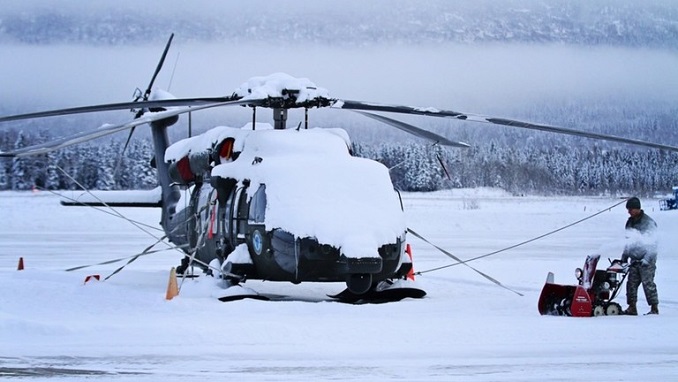
Climate change is among the largest threats to US military bases in the Arctic which have failed to prepare for the effects of warming weather, the Pentagon’s inspector general reported on Friday.
Despite the warnings in the 2019 Pentagon report to Congress pointing to climate change as a national security issue to potentially impacts US military missions and bases in the Arctic and sub-Arctic, the threat was largely overlooked which resulted in bases being unprepared to adapt to the long-term effects of climate change.
They even have already seen damage from changing weather patterns, including cracked runways, hangars, roads, and rock barriers being damaged by melting ice, and increased flooding since climate change is more acute in the Arctic than in most other parts of the world,
The inspector general also pointed out that wildfires have led to higher mitigation costs and disruptions to training time.
The lack of emphasis at the Department of Defense on ensuring the US bases’ climate resilience was pointed to as the main reason for the planning failures by the inspector general, who underscored in his report that rather than analyzing their installations’ infrastructure, assets, and mission exposure and vulnerability to climate change, military installation leaders focused on existing weather and energy challenges.
As the inspector general established during his visit to six bases in the Arctic and sub-Arctic regions, commanders there weren’t aware of requirements for resilience planning ordered in a 2016 Pentagon directive and didn’t comply with mandates to identify current and projected environmental risks, vulnerabilities, and mitigation measures.
The US, Russia, and other countries have been striving to increase their military presence in the Arctic, mainly due to the region’s vast petroleum and mineral reserves that are now increasingly accessible since warming temperatures have opened new shipping lanes.
The Arctic is being seen as a key region for US national security by the Pentagon, whose strategy states that the region is a strategic corridor for US forces between the Indo-Pacific and Europe as well as a potential vector for an attack on the US homeland since Russia and China are operating more freely there.
Russia also warned recently that the increasing US and other NATO members’ military activity in the Arctic region raises the risks of unintentional incidents which may spark conflicts and also cause serious damage to the fragile ecosystem.




Be the first to comment